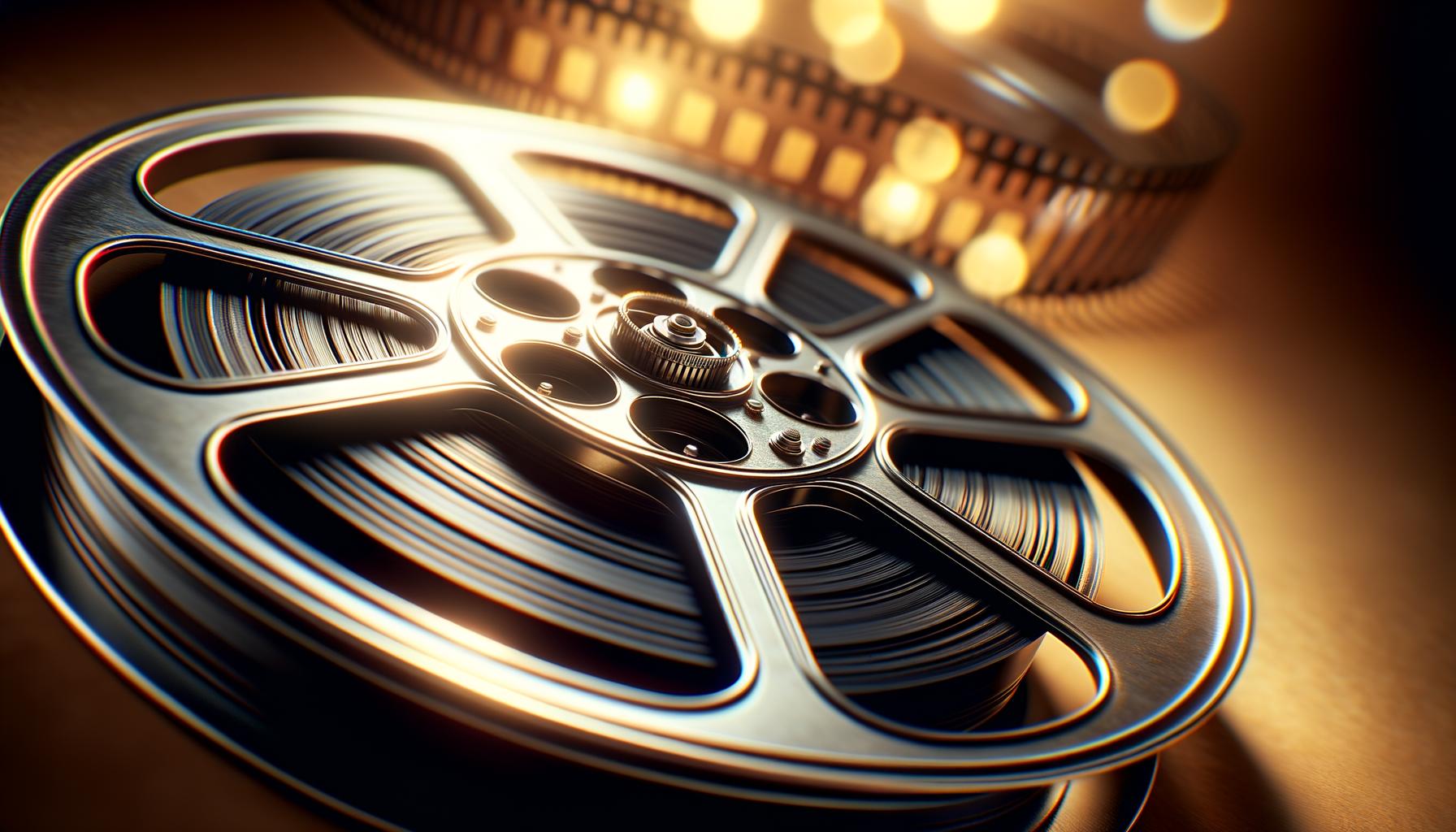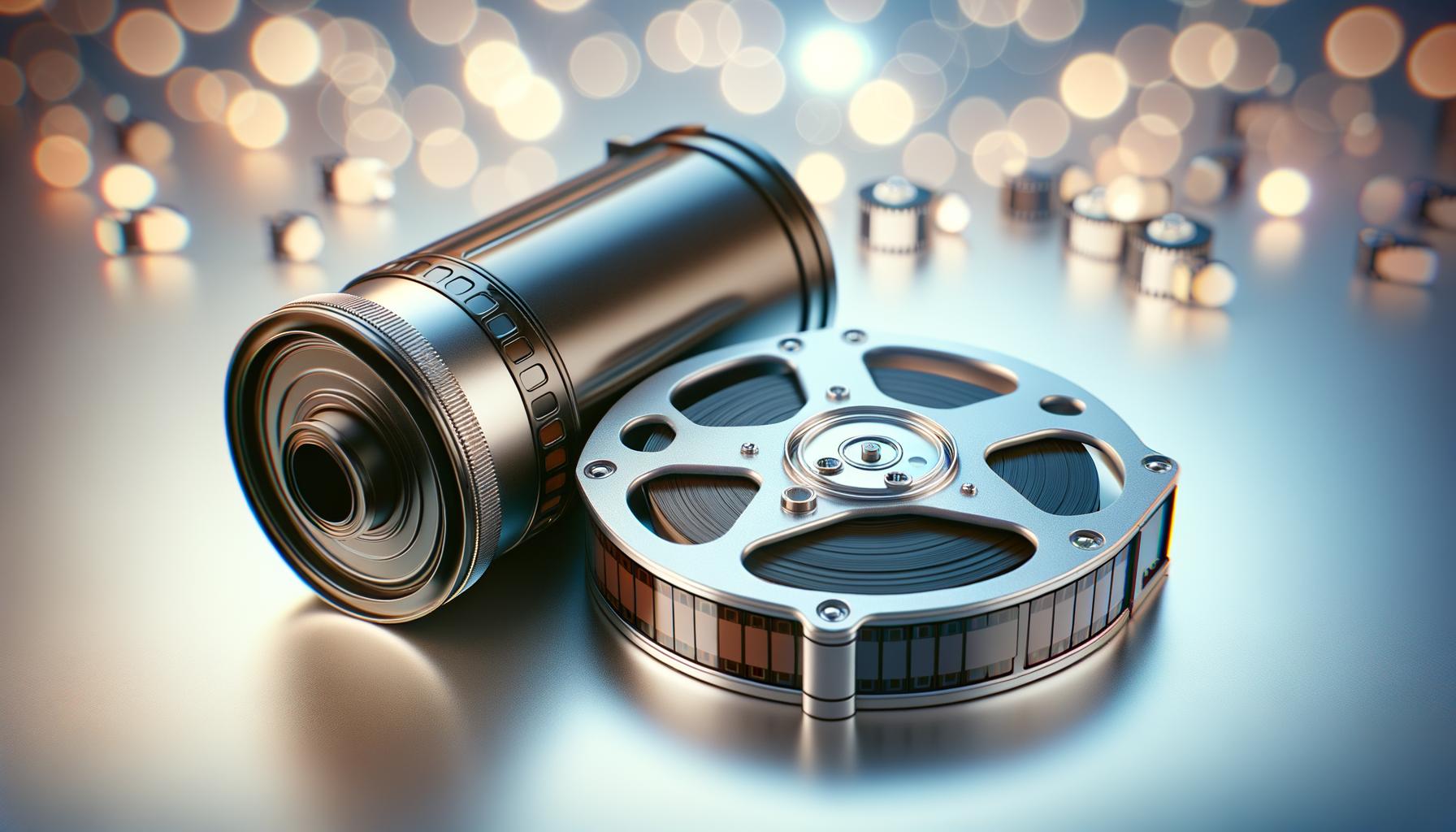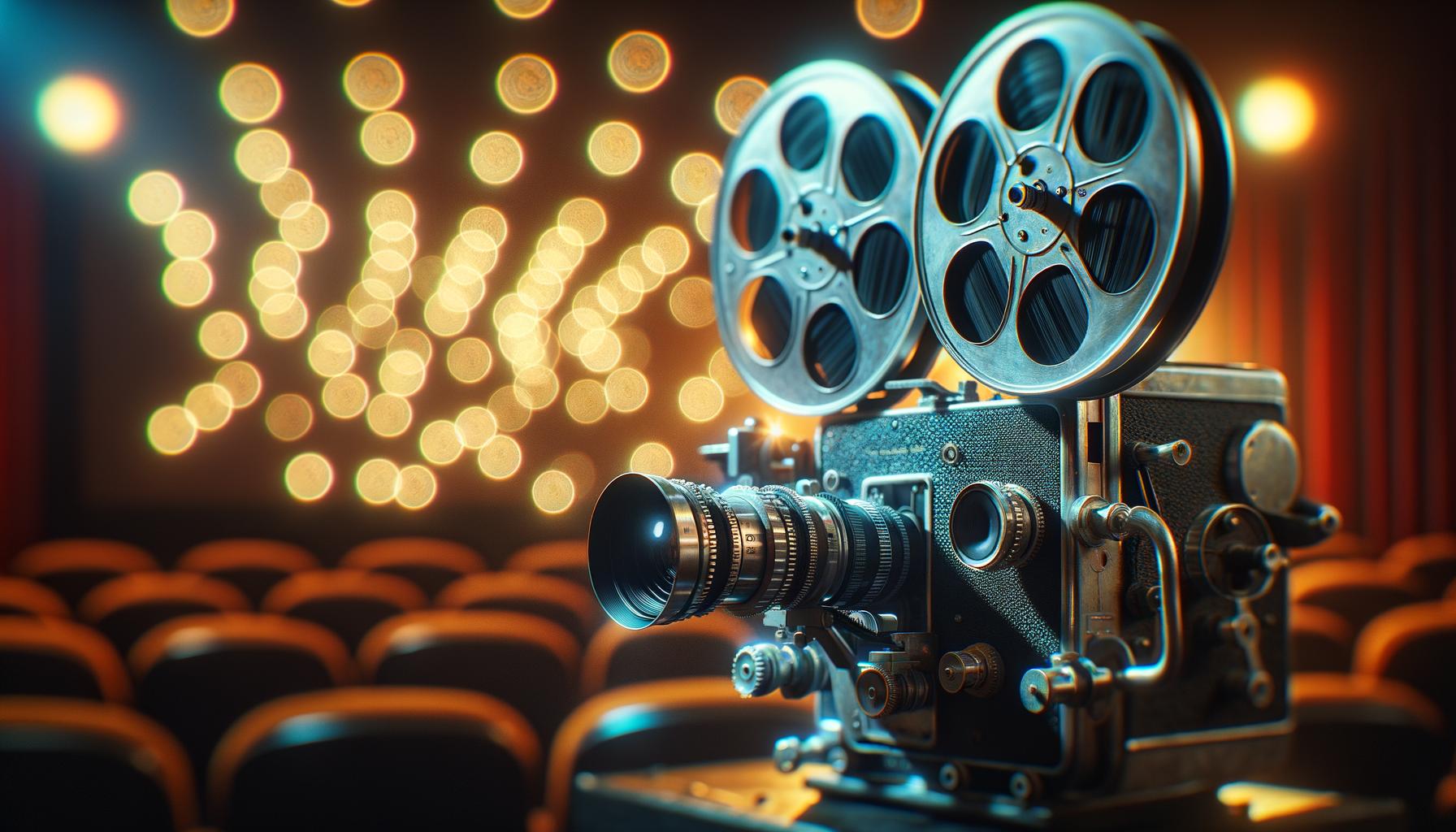Advantages of 35mm Filmmaking in the Digital Age

Take a journey back in time and step into the fascinating realm of 35mm filmmaking, an art form that played a significant role in the evolution of cinema. Devoid of today's digitization, 35mm filmmaking offers a rich historical context, shaped by talented visionaries of the past. While it might seem obsolete in the digital era, you'd be surprised at its prolonged relevance and unexplored potentials. The technical aspects of 35mm filmmaking set it apart from its digital counterpart, providing an avenue for heightened aesthetic control and artistic flexibility. As we delve into the intricacies of 35mm filmmaking, we'll uncover the reasons behind its merits, unique visual qualities, and enduring appeal. Not forgetting its impact on storytelling techniques, the immersive audience experience it provides, and the distinctive techniques it supports. From its archival reliability to its influence shaping today's film industry, the world of 35mm is vast and striking. So join us as we unravel the allure of 35mm filmmaking, whilst exploring its resurgence and value in educational settings. Here's to celebrating the enduring charm of 35mm in the digital age!
What Really is 35mm Filmmaking?
35mm filmmaking involves a unique blend of technical complexities and artistic potentials. When we delve into the technical aspects, we find that it utilizes a film stock of 35mm width. This strip of film is bombarded by light in a camera, and the chemical reactions triggered create an image on the film. Unlike digital filmmaking, where light data is captured digitally, 35mm filmmaking essentially captures light physicality. For instance, Paul Thomas Anderson's "There Will Be Blood" was shot on 35mm and vividly illustrates the textural qualities that this medium offers. The hues in its sunset scenes appear more warm and natural than what you typically find in digitally shot scenes.
Indeed, there is a discernible variance between 35mm and digital filmmaking. No matter how sophisticated digital cameras become, they can't quite replicate the unique mood that 35mm can evoke. This divergence is largely due to how the medium interacts with light, which affects color gradient and depth perception. A case study could be the book-to-film adaptation of "The Great Gatsby" by Baz Luhrmann, that was shot in 3D digital, and was criticized for its overly bright and artificial aesthetics. If it were shot on 35mm, traditional movie watchers argue it would've held a more authentic and grounded feel.
Why Choose 35mm Filmmaking Over Digital?

Many filmmakers opt for 35mm for its artistic and aesthetic superiority. Unlike digital format, 35mm opens doors to deeper control over the visual narrative. This tangible medium allows creators to experiment with film processing and other post-production elements, rocketing their piece to new heights of uniqueness. One legendary director, Quentin Tarantino, known for his advocacy of 35mm, attributes the heightened visual quality of his pieces, such as the multi-award-winning "Pulp Fiction," to this traditional film format.
Aside from the creative aspect, filmmakers gravitate towards 35mm due to its impressively distinct feel. Viewing a film on 35mm mimics a mini art exhibit due to its authentic 'film grain'. This sparkles a textured effect to the picture, unbeknownst to digital films. It's much like the sound of vinyl records incomparable to digitally recorded music, imparting a raw, authentic experience. Take Christopher Nolan's "The Dark Knight," shot partly on 35mm — the film presented a level of realism that contributed to its universal acclaim and commercial success.
Durability and Longevity: The 35mm Advantage

35mm film is known for its longevity and toughness. Unlike digital data, which might get lost or damaged due to hardware issues, 35mm films can last for over a century if stored properly. Physical media like 35mm film benefits from being virtually indestructible, unlike digital files that can corrupt and lose quality over time. Christopher Nolan and Quentin Tarantino have long endorsed the usage of explicit 35mm film for its archival stability.
The durability of the 35mm film also contributes to its sustainability. In contrast to digital data that quickly becomes obsolete or hinders data retrieval due to evolving technology, 35mm film has stayed consistent, ensuring easy accessibility even after many decades.
This durability directly impacts the preservation of our cinema history. Iconic films of the past century stored in 35mm can still be viewed today with the same picturesque quality, preserving the artistic integrity of these classics. Companies like Disney have meticulously stored their films in 35mm, ensuring their masterpieces would endure.
Understanding the importance of durability and endurance of 35mm films, many contemporary filmmakers have opted to shoot using 35mm for critical scenes. This technique provides a stable, hard copy of film that can be stored for years and is safe from any accidental deletion or data corruption.
The Impact of our Past: Importance of 35mm

The history of cinema is deeply intertwined with 35mm filmmaking. Its contribution to the development of cinematographic language and storytelling can never be overstated. Directors like Alfred Hitchcock and Orson Welles perfected their craft on 35mm, creating timeless classics that laid the foundation for Hollywood's 'Golden Age.' This tradition continues today, with directors like Quentin Tarantino and Christopher Nolan swearing by the unique qualities of 35mm film, reflected in their works like "The Hateful Eight" and "Dunkirk." Despite the digital revolution, 35mm continues to influence filmmaking techniques, inspiring a mise-en-scène that reinforces storytelling and character development with its singular charm. It reminds us that while technology evolves, art often hinges on its ability to invoke nostalgia and honor its roots.
35mm Films and the Viewing Experience

The viewing experience brought by 35mm films is notable for its unique and appealing characteristics. Central to this is the visible film grain, which is intrinsic to the film medium. This grain provides the audience with a sense of texture and gives each frame a pronounced presence. The film grain also introduces subtle variations in color and brightness that contribute to a more organic and dynamic viewing experience.
Additionally, the colors offered by 35mm films are equally fascinating. The wide dynamic range makes for rich color reproduction that lends depth and realism to every shot. Unlike the colors seen in digital film, 35mm delivers hues and tones that are warm and full-bodied. This color palette can be used to create a nostalgic mood or to evoke powerful emotional responses from the audience. Thus, 35mm offers a viewing experience that leaves a lasting impact and truly resonates with the audience.
Unique Aspects of 35mm Cinematography
35mm filmmaking allows for specific techniques that aren't attainable in digital processes. For instance, it lends to a unique focusing control that produces an authentic look. The introduction of limited depth field at play manifests as a tactic that separates the subjects from the background, creating a distinctive aura in 35mm films compared to digital films. This method emphasizes the subject and induces a personal connection with the viewer, a storytelling technique that's unique to 35mm cinematography.
The play of light in 35mm films also sets it apart. In a movie that was shot on 35mm, like 'Interstellar,' the film responded differently to light, lending a realness to the space environments and deep blacks which a digital medium wouldn't have accomplished. The resulting flares and light effects in 35mm film aren't by accident, but a product of crafted skill and technique.
Further, in practical ways, the limitations of 35mm can also enhance creativity. Filmmakers have to carefully plan their shots due to the finite nature of film reels. Even seasoned directors, like Quentin Tarantino, especially enjoy the creative pressure and discipline induced by 35mm photography. This level of thoughtfulness is reflected in every scene of Tarantino’s work; In 'The Hateful Eight,' for example, each shot had careful framing and bespoke set design, making the film a visual treat. Thus, 35mm film fosters a nuanced cinematic language that speaks in depth, visuals, and feel.
35mm Filmmaking as an Art

35mm filmmaking stands as an indelible form of art. Unlike mere recording medium, the nuances of this craft delineate its exceptional stature in the world of cinema. For instance, Quentin Tarantino, a fervent advocate of 35mm, insists that 'there's magic' inherent in the film medium, thus presenting a compelling case for its artistic value.
The tactile experience of handling the film, to the artistic choice with each frame shot, elevates 35mm filmmaking as a potent form of self-expression. Illustrating this point, films like "The Master" that utilize 35mm beautifully exhibit its artistic depth and potential, communicating stories in a way that seems intrinsically human.
Another aspect adding to 35mm filmmaking's artistic allure is its unpredictability. Every light leak, every film grain, every spontaneous change in focus brings a unique character to the final product. This unpredictability adds an element of surprise and excitement to the filmmaking process that can't be replicated with digital methods.
Additionally, the critical acclaim and audience appreciation for the nostalgic aesthetics of 35mm films in movies like "La La Land" demonstrate the enduring appeal of this art form. Thus, 35mm filmmaking is proving its relevance and artistic merit even amid the digital dominance.
How 35mm Films Shape the Film Industry Today

The use of 35mm film in contemporary cinema stems from its deep roots in the industry. This original medium continues to influence today's aesthetic choices and methodologies, providing a unique cinematic depth unmatched by digital alternatives.
Techniques pioneered on 35mm continue to shape storytelling, with filmmakers emulating the film's organic focus and interplay of light across scenes. These techniques, markedly prominent in Spielberg's early works, give the scenes a tangible texture which adds to the narrative's immersive qualities.
Yet, the value of 35mm in shaping the industry today is not solely in its aesthetic determinants. It also kindles a certain nostalgia and sentiment which appeal to creators and audiences alike. This emotional connect connects past with the present, grounding the film industry in its historical significance and tradition.
Moreover, 35mm has inspired a breed of filmmakers who explicitly assert the value of their craft beyond mere technical proficiency. This advocacy has given rise to an artistically driven resurgence of the medium in a largely digital industry.
In summary, through its aesthetics, techniques, and sentiment, 35mm carries a crucial influence on the contemporary film industry. Today's cinematic landscape undeniably carries the print of its 35mm roots, underlining its enduring significance in the digital age.
Reliable Backup: The Safety Layer of 35mm Films

35mm films serve as a protective shield against digital data loss, acting as a safety net in case of technological failings. They offer a physical relic that can be stored and retrieved in the event of computer crashes or corruption of digital files. Such instances, while rare, can be catastrophic, causing irreparable damage to high-value productions. Yet, with 35mm films securely stored, they serve as a backup medium, safeguarding the filmmaker's work.
Pros of 35mm in Educational Settings

Using 35mm film in academic settings has distinct rewards. It offers a hands-on approach and a deeper comprehension of foundational filmmaking principles. It’s similar to a science student dissecting a frog; pupils can touch and explore the film, understanding its workings intimately. This hands-on experience fosters a thorough grasp of framing, use of light, and creates a stronger bond with their work. To illustrate, acclaimed director Christopher Nolan is known to have started on 35mm film, setting the ground for his innovative use of IMAX cameras.
Furthermore, 35mm study is deeply rooted in the history of cinema. Teaching students on 35mm film provides a grounding sense of where the industry began, encouraging respect for the craft and a firm historical context for their work. Renowned institutions like the New York Film Academy still advocate for teaching on celluloid as a rite of passage.
Lastly, learning on 35mm can teach students the discipline that comes from limited footage. This medium encourages mindfulness in every shot due to the cost associated, thus instilling a discipline often lacking in digital filmmaking.
The Economical Benefits of 35mm Filmmaking

Many consider 35mm film production costly. Nonetheless, it packs potential economical benefits. First off, film cameras are durable and long-lasting. They often require fewer updates, minimizing costs compared to the frequent need to upgrade digital cameras. Also, film reels are less prone to data corruption compared to fragile digital files, reducing expenses tied to data recovery or re-shooting.
Moreover, 35mm film production promotes conscientious budgeting. Cinema lovers would remember the big hit, Moonlight, a remarkable product of filmmaking frugality on 35mm. In essence, the tactile nature of the film prompts cautious planning and disciplined shoots, cutting down post-production expense.
In today's digital age, the resurgence of 35mm film has created a niche market. This allows for added value creation, as evidenced by French survivor of the digital age, Argos Films. Argos has tapped into a profitable business model of film reel storage and restoration work, illustrating another possible economic upside of 35mm film.
Further, operating in the niche of 35mm film production can attract clientele looking for a distinct aesthetic, driving demand for your projects and thus, potentially increasing revenue. Examples such as Once Upon a Time in Hollywood, shot on 35mm, saw this success.
In summary, the so-called expensive 35mm film carries potential savings and profit avenues. Thus, filmmakers should reassess the economic benefits of 35mm filmmaking, keeping innovation at the forefront.
Physical Presence: Another Pro of 35mm

The tactile nature of 35mm film gives it a physical presence, something that digital files lack. This tangibility heightens the reverence for the medium; each reel contains precious frames of artistry that can be touched and experienced on a sensory level. It’s like holding a piece of history or a pivotal moment caught on celluloid. This tangible nature also provides an intimate connection between the filmmaker and the work, reinforcing the sense of the filmmaking process as a hands-on craft.
How to Get Started in 35mm Filmmaking

Diving into 35mm filmmaking is not as daunting as it may appear. Start by seeking classes or workshops that guide the basics. Many film schools and institutions offer tangible training on this classic medium.
Next, get yourself a film camera. It's an essential beginning point. Providers such as Canon and Nikon offer sturdy, beginner-friendly models. Do some research, buy secondhand if necessary, and start experimenting with your artistic voice in 35mm filmmaking. Remember, the only way to hone your skills is by practicing.
Conclusion: Embrace the Charm of 35mm Filmmaking
The unique benefits of 35mm film can't be denied. From the aesthetic allure to its enduring nature, 35mm offers filmmakers a range of opportunities to explore their creative callings. It's more than a nod to cinema's past, it's a rope flung across the chasm of time linking storytelling's roots to its future.
35mm offers a distinct charm, a tangible presence in our digital world. Its influence on modern cinema, engrained in our visual culture, runs deeper than often acknowledged. It urges the next wave of filmmakers to think outside the pixel box.
So, explore this medium; embrace 35mm filmmaking's endearing charm. It's not just an echo from the past; it's still beating, still relevant. Reach for the reel, use it as your canvas, and let the magic of 35mm film unfold.
